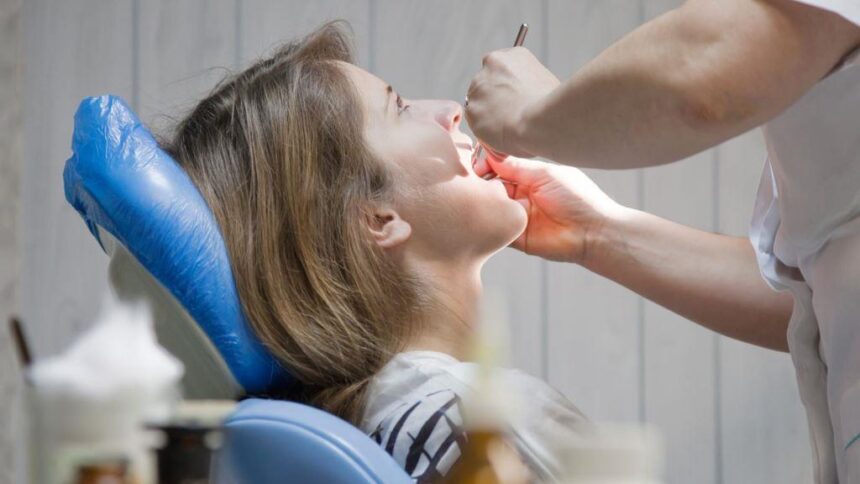You need to know that a moving tooth requires an immediate visit to the dentist. Do not delay! And most importantly - do not try to move the tooth. Such self-checking can only make matters worse. We know you certainly want to check the extent of the problem, but take our word for it - leave it to your dentist!
If you want to learn more about moving teeth in adults, read our article.
What can be done to avoid losing a tooth?
If a tooth moves when you bite, chew or speak, go for an appointment as soon as possible. This is very important! This is by no means a common occurrence, and ignoring it can lead to tooth loss.

Moving tooth - causes
Why does a tooth move? This is called tooth mobility - it refers to the leaning of the clinical crown of the tooth against the alveolar bone. There are three degrees of tooth mobility:
- shifting of the tooth by no more than one millimetre,
- one to two millimetres of tooth displacement,
- shifting of the tooth by more than 2 millimetres plus vertically.
Dentist when checking degree of tooth mobility (using a special device - the periotest), will be able to implement the appropriate treatment. Of course, it is also crucial to determine the cause - and these can be many!
Firstly, a moving tooth can be the result of mechanical trauma. Secondly, orthodontic treatment, which in some cases can lead to a change in the size of the root surface or deformation of the alveolar process.
Deformation of the appendix can also occur due to bruxism - So if you suspect this ailment in yourself, don't leave it unattended. Read more on this topic: "Bruxism, or teeth grinding - where does it come from and how to get rid of it?".
What else makes you face a moving tooth? Periodontitis, of course. This is an inflammation of the periodontium that leads to many unpleasant consequences. The first symptom is bleeding gums. Read more about periodontitis in our article: "Periodontitis - causes, symptoms and treatment of periodontitis in the UK".
Not insignificant is also caries. If left untreated, it leads to deformation of the hard substance of the tooth, which can result in, among other things, mobility. How it manifests itself, how to prevent it and how to treat it are described in our article: "Tooth decay - where does it come from, how to treat and prevent it?".
Important - a moving tooth can also be the result of root canal treatment, but also tartar!

Moving tooth - treatment
As we have already mentioned, treatment of moving teeth is not possible without identifying the cause of the mobility. However, it always involves strengthening either the tooth structure or the surrounding tissues.
It is also necessary, of course, to eliminate the cause of the. So if it is periodontitis or tooth decay, the right steps should be implemented immediately to get rid of them.
Treatment may also include the fitting of a special splint that is invisible to the eye. This will stabilise the tooth (or teeth) and prevent mobility.
It is not uncommon for subgingival tartar accumulation to be the reason for thethrough which the tooth moves. Here, you will need a curettage procedure, which involves removing calculus from the area covered by the gum.
In cases of tooth or tooth mobility, sometimes a prosthetic restoration may be necessary. Read our article: "Prosthetic treatment in the UK - everything you need to know" and find out more!

First, prevention
A loose tooth is undoubtedly a big problem, but in many cases it can be prevented without any trouble. All you have to do is visit your dentist's office absolutely once every six months to check the state of your mouth. What's more, you will be able to get rid of tartar and plaque regularly. Read our article: "Dental hygiene in the UK - scaling, tooth sandblasting, polishing and fluoridation".
We also encourage you to visit our practice in the UK. Make an appointment to visit! You will take care of your teeth in a relaxed atmosphere, surrounded by professionals!

